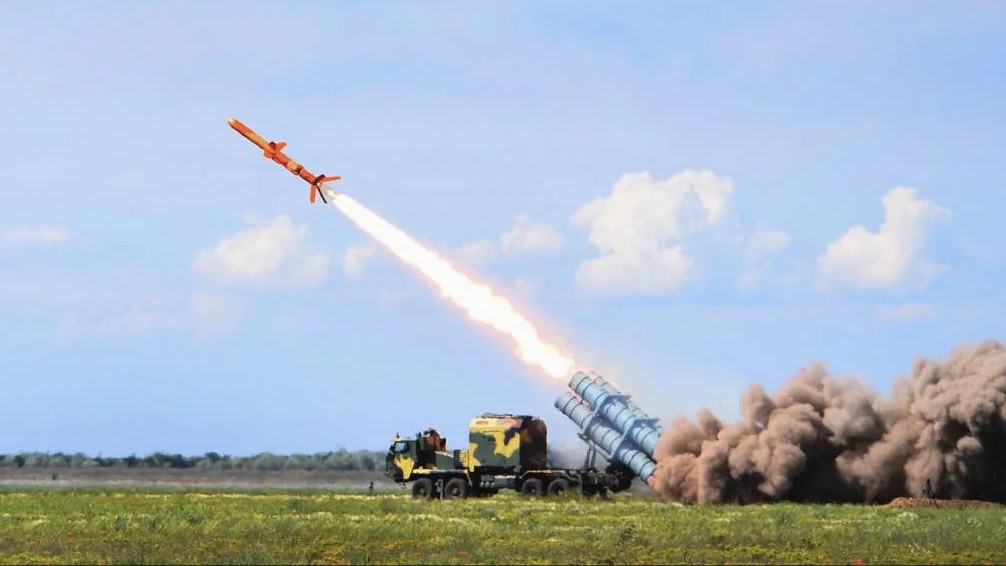Satellite Evidence Reveals China Working on Nuclear-Powered Aircraft Carrier

Recent analysis of satellite images and Chinese government documents strongly indicates that China is forging ahead in developing a nuclear propulsion system for its future aircraft carriers, potentially reshaping naval power dynamics in Asia and beyond. Researchers at the Middlebury Institute of International Studies uncovered this significant development while examining a facility near Leshan in Sichuan Province, long suspected of harboring a nuclear reactor tied to China’s naval ambitions.
Instead of revealing a reactor geared towards producing weapons-grade materials, analysts identified evidence pointing to a land-based prototype for powering a large surface warship—specifically, what many believe will be China's first nuclear-powered aircraft carrier. This discovery, dubbed the “Dragon Might Project,” or Longwei, aligns with Beijing's overarching aim to establish a true blue-water navy, capable of projecting power far from its shores. Nuclear-powered aircraft carriers would elevate China's naval capabilities and grant it access to a select club that currently includes only the United States and France.
The Strategic Leap: From Conventional to Nuclear Power
China's naval transformation is already in full swing. The People's Liberation Army Navy (PLAN) is now the world’s largest in sheer numbers, but the addition of nuclear-powered aircraft carriers would signify a quantum leap in capability. This would allow for sustained operations across the globe without needing to refuel frequently, extending China’s military reach into strategic regions like the Western Pacific and Indian Ocean. Such carriers would also have the advantage of more onboard space, as removing the need for fuel oil storage frees up room for additional aircraft and weapons, boosting operational effectiveness.
Tong Zhao, a senior fellow at the Carnegie Endowment for International Peace, argues that the development of nuclear-powered carriers would symbolize China's emergence as a formidable naval power. "For China's leadership, this is not just about capability but also national prestige," Zhao said, emphasizing the domestic and international impact of such advancements. The sentiment is echoed by the Pentagon, which has expressed concerns about the growing sophistication of China’s naval assets.
Unveiling the Longwei Project
The revelation of the Longwei Project came from a blend of satellite imagery, environmental impact reports, and procurement contracts. Imagery from the Mucheng township area has shown significant developments from 2020 to 2023, including the construction of infrastructure needed for a reactor, such as water intake systems. Meanwhile, project tenders have identified equipment for pressurized water reactors, typical of naval propulsion systems, being procured for installation on large surface ships. This evidence strongly suggests the intent to create a nuclear-powered platform rather than a traditional conventional carrier.
Documents further revealed that China’s 701 Institute, responsible for designing aircraft carriers, had obtained reactor equipment under the project’s "national defense designation," another clue pointing toward a naval application. Researchers Jeffrey Lewis and his team at Middlebury stressed that this represents the first verifiable step toward China developing nuclear propulsion for carriers.
Even as satellite images unveil the site’s expansion, construction noise complaints from local residents have added a human element to the unfolding narrative. Publicly available environmental assessments emphasize the project’s "classified" and "national defense-related" nature, solidifying suspicions about its military purpose.
Modernizing and Catching Up: China's Aircraft Carrier Evolution
The PLAN currently operates three aircraft carriers. The first, the Liaoning, and the second, the Shandong, are conventionally powered and use a ski-jump launch system, a less efficient mechanism compared to the electromagnetic catapults used by the United States. However, the Type 003 carrier, named Fujian and launched in 2022, marked a significant leap forward with its advanced electromagnetic launch system, although it remains conventionally powered. The anticipation surrounding a possible Type 004 nuclear carrier points to an even greater leap, with Beijing potentially preparing to manufacture both types simultaneously.
Despite the ambitious timeline, experts like Matthew Funaiole from the Center for Strategic and International Studies believe the next carrier is unlikely to be nuclear-powered. Instead, incremental upgrades to the Fujian’s design may be prioritized. Nevertheless, the groundwork for nuclear propulsion is already being laid, signaling China’s long-term vision to compete with the U.S. Navy, which operates 11 nuclear-powered supercarriers.
A Blueprint for Global Naval Influence
China's rapid naval modernization is not just about adding more ships but crafting a force capable of asserting dominance in contested waters like the South China Sea and extending influence into the Indian Ocean. By developing nuclear-powered carriers, the PLAN would have the range and endurance to challenge the United States’ ability to intervene in Asia-Pacific affairs, including in defense of Taiwan, an area of high strategic tension.
Nick Childs, a senior fellow at the International Institute for Strategic Studies, noted that while China’s current deployments have been cautious, staying near shore-based support, the long-term ambition is clear. "Larger carriers more akin to U.S. models will give China greater flexibility," Childs explained. With nuclear propulsion, these ships could power advanced technologies, such as cutting-edge radars and electromagnetic catapults, making them formidable players on the high seas.
Global Implications and the U.S.-China Naval Rivalry
The strategic implications of a nuclear-powered Chinese carrier cannot be overstated. Beyond prestige, such vessels would serve as instruments of power projection, capable of operating deep into the Western Pacific and Indian Ocean. They would enable the PLAN to support long-range missions and enhance China's position in territorial disputes across the First Island Chain, an area that encompasses Taiwan and the South China Sea.
For the United States, this development adds urgency to maintaining a robust naval presence in the Indo-Pacific. The Pentagon's latest assessments underscore the challenge posed by China's expanding naval capabilities, even as U.S. shipbuilding lags behind in comparison.
As Chinese President Xi Jinping continues to emphasize the importance of maritime power in his vision for national rejuvenation, Beijing’s investments in nuclear-powered warships represent a long-term commitment to challenging U.S. dominance on the world's oceans. This new chapter in the maritime rivalry is poised to redefine strategic calculations across the globe, from the Pacific islands to the corridors of Washington, D.C.


